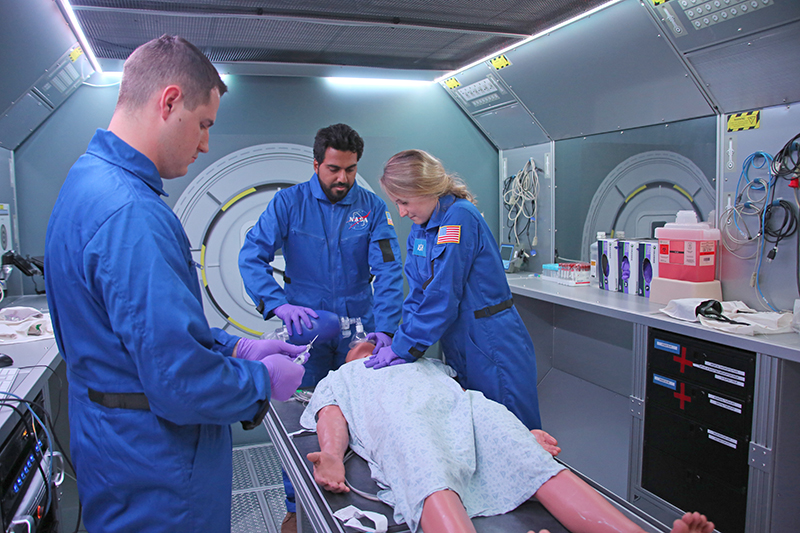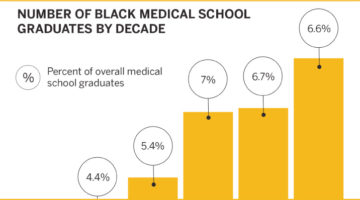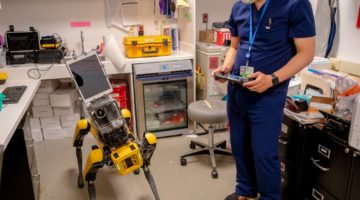
In a first-of-its-kind facility funded with support from NASA, BWH researchers in the Neil and Elise Wallace STRATUS Center for Medical Simulation are developing best practices for astronauts to manage medical emergencies in space.
Based on the International Space Station’s (ISS) medical bay, the simulator is part of a nontechnical skills training program developed for astronauts embarking on human-exploration missions to the moon, near-Earth asteroids, and Mars.
A mission to Mars, which NASA hopes to launch in the 2030s, would take several years. This extended journey makes it likelier the crew might experience a medical emergency than they would along the five-day trip to the ISS. Because there would be limited supplies and only one or two crew members with medical training on board, the simulation drew inspiration from medical event management in rural and remote locations.
“The most exciting part of this project is that we’ve been successful in creating an environment that mimics the medical facilities that might be available to astronauts on a long-duration mission,” says Jamie Robertson, PhD, MPH, assistant director of Simulation-Based Learning at STRATUS. “This allows us to create scenarios where crew members face a variety of medical emergencies. By studying the behavior of the team in these situations, we can identify the behaviors that might increase survival and mission success. Hopefully, this research will lay the groundwork for the programs that will train the first Mars astronauts.”











